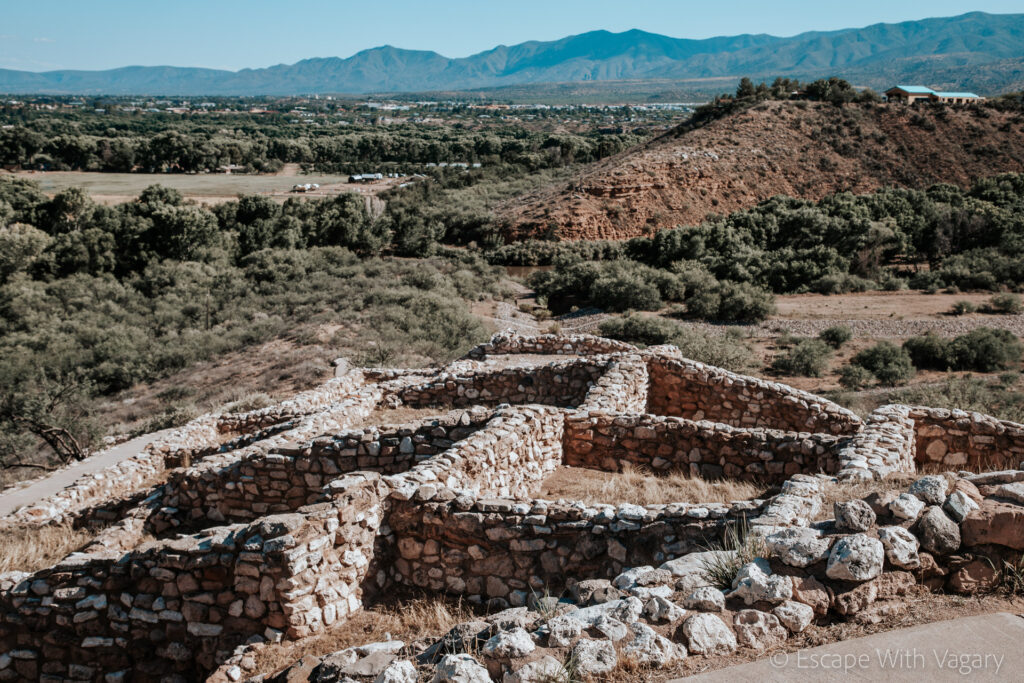


For $10 you’ll gain entry to both Tuzigoot National Monument and Montezuma Castle National Monument for the week. About 20 miles apart, both monuments are said to have been inhabited by the Sinagua people.
From 600 A.D. – 1450 A.D., these Native Americans lived throughout central and northern Arizona. Although their origin is unclear, what we do know is that these people resided here centuries before Christopher Columbus made it to America.
They were hunters, gatherers, and farmers. A majority of what they grew was corn, squash, and beans. They’re believed to have been resilient, surviving off the land in the desert for years, using natural resources to thrive.
What really interested me was that when archeologists recovered artifacts from Montezuma Castle and Tuzigoot they found a lot of things that weren’t native to the area. They traded for items that were hundreds of miles away from them. From the artifacts they did find, they discovered that these people lived simply, but were also very gifted. They created the necessary tools for survival, and were spinners and weavers as their intricately designed clothes showed.
Both of these sites were abandoned around 1425 A.D. and it’s never been determined exactly why.


This amazing 2 – 3 story pueblo has 110 rooms and is believed to have been built by the Sinagua between 1125 and 1400 A.D. This site of stone rooms expands down from the highest point of a limestone and sandstone ridge, creating this complex pueblo with rooms branching out from the middle.
Tuzigoot showcases the largest and best preserved Sinagua pueblos located within Verde Valley. The site was discovered and excavated between 1933 – 1936 and was presented to the public for display.

What I found most interesting about the design of this pueblo was that you can see there’s a lack of doors throughout. The Sinagua people would access different rooms using ladders to enter from the roofs of each area.
On the upper story of the pueblo you’ll see these bigger, central rooms that are believed to have served for public functions and gatherings.


Located about 20 miles away from Tuzigoot is this ancient adobe structure that sits high up in a limestone cliff. It blows my mind to think about how these individuals designed this beautiful structure by hand, turning nothing into a grand home.
The castle is a 5 story, 20 room complex built by cliff-dwelling Sinagua Indians. Montezuma is believed to have been constructed around the time of Tuzigoot, during the early 1100s. However, evidence has been found that shows that the construction of the site happened over time. The Hohokam had inhabited the area before the Sinagua people came.

Not only did they have the castle, but they also utilized the Montezuma Well to collect water. Historians say that the castle portrays the growth that happened in early American culture. In a way of transitioning from a nomadic lifestyle they began settling down by establishing their roots.
Artifacts uncovered from within the castle showed a culture rich in material items, from pottery to tools, basketry, and clothing. In 1906 the castle was established as the third National Monument dedicated to preserving Native American culture.
